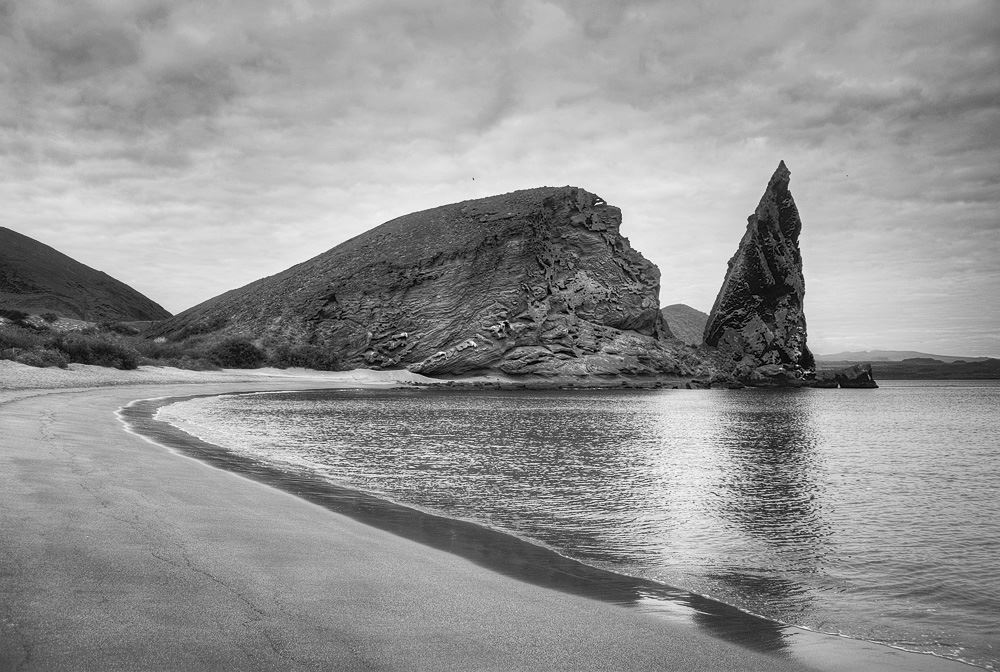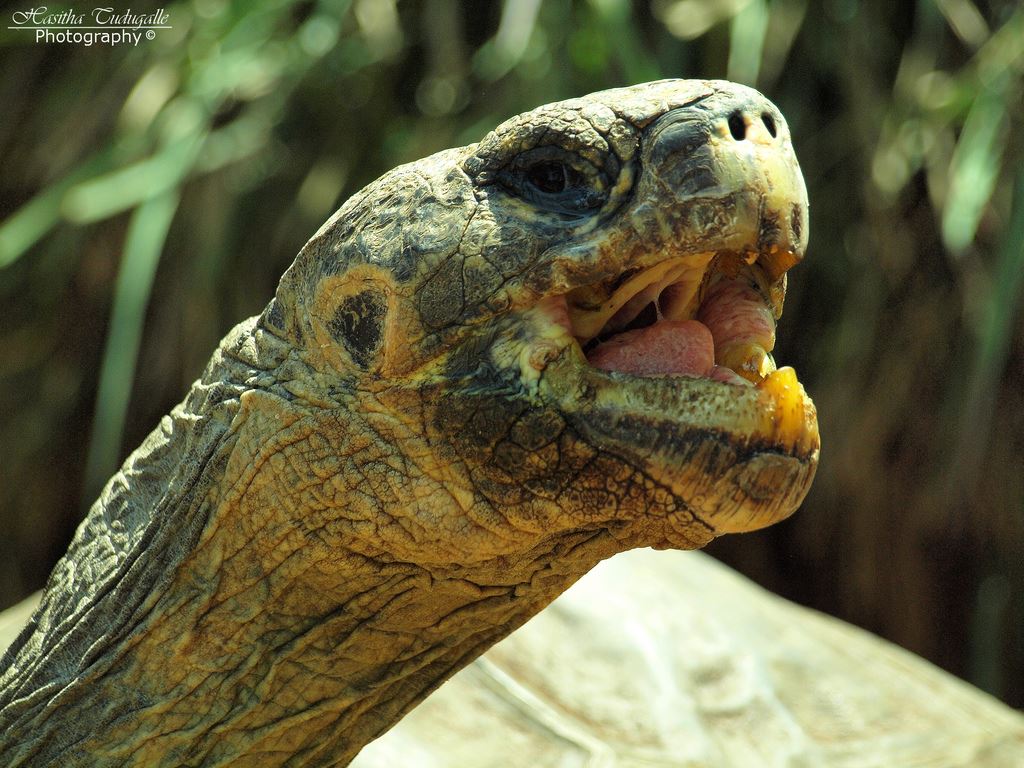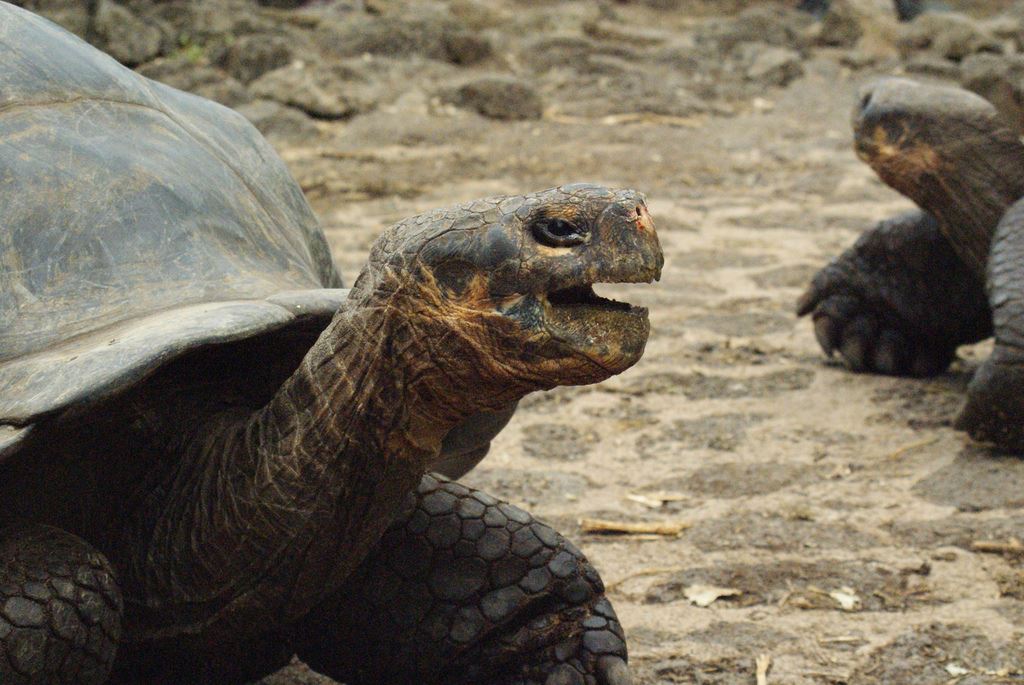If you’re planning a trip to the Galapagos, you’re almost certainly a nature lover and you’re also probably interested in Charles Darwin and the theory of evolution. If this is the case you’ll definitely want a bit of background on the animals you’ll encounter on your once-in-a-lifetime Galapagos adventure…and where better to start than the iconic Galapagos Tortoise.
Not only are the islands named after them (the old Spanish word galápago referred either to their saddle-shaped shells or just to the tortoises themselves, depending on who you believe) but, perhaps more importantly, the variations between the populations on different islands were responsible for planting the seed of evolution in Darwin’s mind.
Section Type: standardWidthImageS
Picture: Tim Snell

What are they doing there?
Believe it or not the tortoises actually swam the 1000 km (or perhaps were carried by the strong Humboldt current – they are very weak swimmers) from mainland South America. Although they look like the giant tortoises found on Indian Ocean islands, their closest genetic relative is the Argentine or Chaco tortoise – which is quite hard to believe considering how puny the Chaco tortoise is. Scientists reckon that they first made landfall on Española and San Cristóbal (the oldest islands) before going on to populate the other islands in a stepping-stone fashion.
Pounds and inches
The Galapagos tortoise has an average weight of 250 pounds, but the largest recorded specimens have tipped the scales at 475 pounds. This makes them the largest tortoise species on the planet and the tenth heaviest reptile in the world. They are also one of the longest-living species on the plant – the average life expectancy of a Galapagos tortoise in the wild is about 100, but one captive specimen reached at least 170 years of age. The Galapagos tortoise is herbivorous and they eats up to 80 lb of vegetation per day.
Evolution at work
What’s so amazing about the tortoises (apart from their incredible size) is that the populations on different islands (and even in different parts of different islands) vary genetically. Although there could once have been as many as 15 subspecies, these days only 10 remain, on the following islands: There are 5 subspecies on Isabela and one each on the following islands: San Cristóbal, Pinzón, Española, Santiago and Santa Cruz.
Section Type: standardWidthImageS
Picture: Hasitha Tudugalle

The subspecies can be divided into two broad groups according to the shape of their shells: domed and saddleback. In domed tortoises, the front edge of the shell comes right down to the neck while in saddle-backed tortoises the front of the shell arches high over the neck. Domed tortoises live in moist highlands and eat grasses and low-lying shrubs. Saddle-backed tortoises, on the other hand, live in arid regions and feed on taller plants. The arched shell allows them to stretch their heads much higher than their domed relatives.
Centuries of exploitation
Historically the tortoises were prized for their meat by sailors. Because they’re so big, one tortoise could feed an entire ship, and the fact that they are able to survive for 18 months without water was priceless in the pre-refrigeration age. What’s more they are very rich in oil, and this was extracted and burnt in lamps throughout what was then known as the Audienca de Quito. In total about 200 000 tortoises were killed between the 16th and 20th centuries with their total population reaching an all-time low of around 3000 in the 1970s.
A brighter future
Things have gotten a lot better since those dark days. In 1965 the Charles Darwin Foundation began captive breeding programs, and in 1970 the Ecuadorian government made it illegal to capture, remove, or kill the tortoises or their eggs. The Galápagos National Park Service has also undertaken extensive island restoration projects, with the ultimate goal of returning the islands to their original, pre-human state. All these efforts combined have seen the total population grow to an estimated 20 000 individuals and there are even hopes of selectively rebreeding some of the extinct species.
Section Type: standardWidthImageS
Picture: Dallas Krentzel

In spite of all of this, the Galapagos tortoise remains a critically endangered species. But at least it is a species which you – and hopefully your grandchildren – will be able to see on your Galapagos adventure.
Thanks to Daniel Ramirez for the cover photo of this post.

 South America
South America